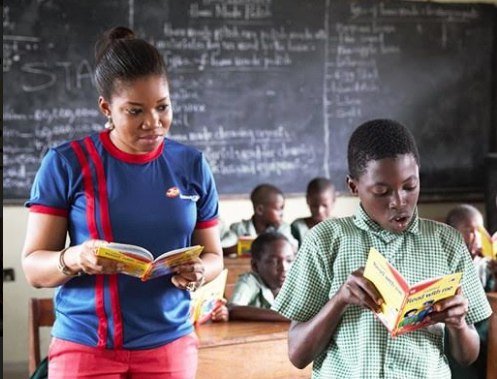The outbreak of the COVID-19 pandemic which led to lockdowns, emergency health and food crisis, loss of lives amongst other things has crippled economies across the globe. The education sector is a major area the pandemic has dealt a blow to.

Around the world, governments closed down schools in order to keep children and teachers safe as they all grapple to overcome the health emergency the world has found itself in. In developed nations, school gates were closed but that did not stop academic activities.
However, in most African countries, which include Nigeria, the closure of school gates led to the abrupt end of academic activities in most schools at all levels of learning.
Hence, while our children are ‘enjoying COVID-19 holidays’, their counterparts in other parts of the world continued learning and have made progress. They are able to achieve this feat because they have earlier integrated virtual learning into their educational curricular.
While many individuals may have divergent views about why we as a country have not been able to achieve same feat as other countries, it is obvious that as a nation we had not invested adequately in education and technology within and outside our schools. That is why once our school gates closed, academic activities ended in most schools.
With about two months gone in the school calendar and nothing tangible achieved, a number of state and private schools have embarked on television and radio lessons, with some states even venturing into e-learning.
Also, a number of the private schools across the country have embarked on the use of virtual tools to continue learning even as they brush their way through various challenges ranging from lack of adequate power supply, poor internet access, high cost of data, lack of capacity amongst teachers, parents, etc.
Aside these challenges, most private schools are saddled with the challenge of how to keep up with the cost of other adopted means of teaching (e.g. the virtual learning) and how to pay their staff: both academic and admin.
These challenges and much more have led to the call to reopen schools.
This brings me to the crux of the matter in question what is the cost of reopening our schools in the face of the pandemic without a cure or vaccine? To better understand the cost of reopening our schools, we may need to consider some various points of concern in the value chain.
These various points of concern of sending our children to school and having them back home must be thoroughly x-rayed to guide our estimation of the cost involved in the of reopening schools.
For a child to go to school in Nigeria, depending on the class category, the following needs to be considered:
Transportation
After a parent prepares his/her child for school, there is often a mode of transportation involved in moving the child to school; this could involve public or private mode of transportation.
In the case of public mode of transportation which over 80% of children use to school, the risk of breaching the safety protocols of COVID-19 may be high.
Money changes hands, surfaces are touched, 2 metres physical distancing in the vehicles may be compromised and this could happen to nothing less than 70% of the children, putting in perspective that this is same for the caregivers, teachers and other school staff.
Sanitisation of pupils /students and surfaces
The old rule of washing your hands with soap and clean water has become very handy in our fight against the scourge.
While it will be very easy for private schools to provide clean water and soap and or sanitizers for their students, it may come at a very huge cost to those in the public schools.
The cost of providing this for a minimum of three months may also be quite expensive for the private schools as well.
The schools will have to provide non-contact infrared thermometers to check the temperature of both students and staff of the school before they gain access into the school premises; this equipment does not come at a very cheap price.
What about the cost of sanitizing surfaces in the school environment every hour or after every 30 minutes to ensure that the surfaces are clean; or will this protocol be ignored to save cost?
This may work without much stress in private schools; but is bound to fail in a school like my alma mater where we do not have a fenced and gated school compound.
Every part of the school’s perimeter gives us access into the school. So, how will such public schools cope with sanitisation and the use of infrared thermometers as measures to keep our children safe?
Will the government be willing to ensure that all public schools are fenced and gated to enforce and regulate the various sanitisation measures required or will they ignore it because of the high cost involved?
Source: Vanguard.
Post Disclaimer
The opinions, beliefs and viewpoints expressed by the author and forum participants on this website do not necessarily reflect the opinions, beliefs and viewpoints of Anaedo Online or official policies of the Anaedo Online.




